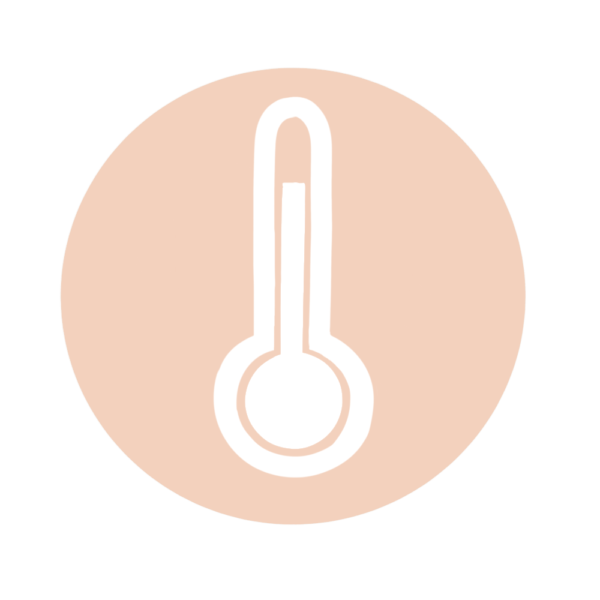Fever
Baby health

Every healthy child will catch a fever from time to time. Still, a lot of parents feel worried experiencing a feverish child for the first time.
What is a fever?
If your child has a fever, it means the body temperature is above normal. Usually, this happens as a normal response of a child’s immune system to a virus (or bacterial) infection. Most healthy children can tolerate a fever well.
What temperature is normal?
Around 37°C is normal (a digital thermometer is the best type to use to get an accurate temperature reading)
38–38.9°C – mild fever
39–39.9°C – high fever
40°C or higher – very high fever
Usual phases of fever
- First the child experiences coldness, maybe even chills, only the head is warm when you touch it. The hands and feet are cold. The child has flushed cheeks and is less active. When your child experiences cold hands and feet, it is good to put your child in a warm bed with a hot water bag.
- The kid’s body found a new temperature balance, hands and feet are warm again. Now try to slowly cool the body by placing cold towels on the forehead, calves and neck
- The heat is distributing, whole body feels hot and sweaty, relaxed and sleepy
How to treat a mild fever?
Most fevers last only three to four days – and a mild fever may not need any treatment at all. If the fever is mild, you can treat your child with the following ideas:
- Feed milk more often to breastfed or formula-fed baby.
- Give them plenty of fluids to drink, little and often, for older kids. This helps cool them down and replaces fluids lost through sweating.
- Dress them in lightweight clothes and use lighter bedding. Keep the room temperature normal.
- Put cool towels on your child’s face, arms and neck, and do sponge bath to help them cool down and reduce the fever. Don’t use any rapid cooling methods that make your child shiver. (The muscle movement in shivering will actually raise your child’s temperature and can make their fever worse.)
- You can give your child Paracatamol to reduce fever or if they have a headache or feeling unwell. Always give the dose that is written on the packet. Do not give them any other medicine unless prescribed by the doctor.
- Check your child’s skin colour, activity, breathing and hydration after giving paracetamol or ibuprofen.
- Check your child during the night
- Take your child to your doctor, if there is no improvement or if the fever is getting higher.
Signs of real danger
Seek immediate medical help if:
- Your baby under three months has fever. Even a mild fever must be taken to the doctor!
- Your baby between three and six months with a high fever (anything over 39 ºC)
- Your child is still feverish after three days of home treatment, or seem to be getting sicker
- Your child is shivering or shaking uncontrollably or have chattering teeth
- Your child has a severe headache that does not get better after taking painkillers
- Your child is breathing differently or having trouble breathing
- Your child is confused, unusually drowsy or you can’t wake them up properly
- Your child seem floppy or complain of leg pain
- Symptoms of meningitis (hallucinations, vomiting, stiff neck, skin rash)
- For older children, it‘s very important to look at other symptoms and how unwell your child seems. Some mild diseases produce very high fevers and severe illnesses can produce mild fever.
- If your child has a convulsion also known as fit
What is a convulsion (fit)?
Sometimes a fever can lead to a convulsion. Then your child may jerk or twitch and become stiff or floppy. Children can also become unconscious or unaware of their surroundings, or have trouble breathing. Most often these convulsions don’t cause any harm, but if it this happens, follow these steps:
- Lie your child on their side
- Make sure they don’t breathe in any vomit
- If the fit doesn’t stop within five minutes, call emergency
- Take your child to your doctor when the fit has stopped
Don’t forget
A mild fever is usually a response to a virus infection, and without any other symptoms nothing to worry about. Make sure to keep an eye on your child’s overall condition and check for other symptoms. And most importantly, give them lots of attention, care and rest to ensure a quick recovery.
Verified:
Dr. Piyawut Kreetapirom, MD. license no. 41578 (1 July 2020)



